This post may contain affiliate links. I only recommend products or services that I personally use or trust, promise!
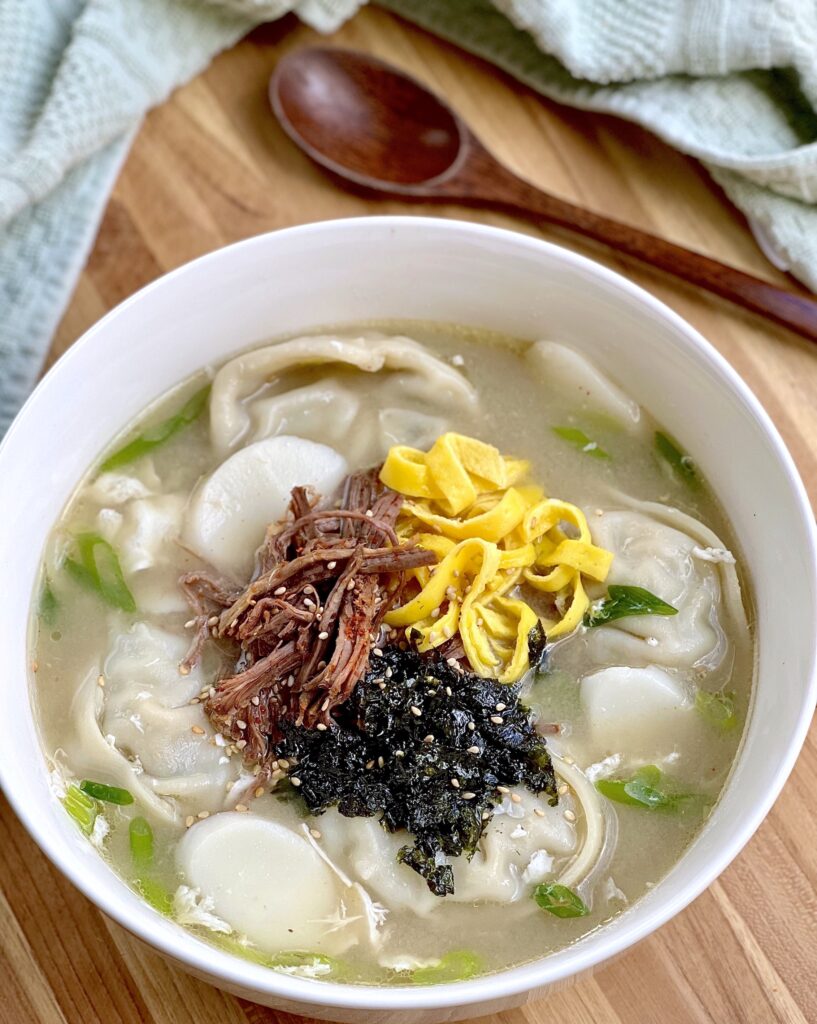
Tteok mandu guk (Rice cake soup with dumplings) is a classic comforting Korean dish that can be enjoyed year round, but traditionally eaten on New Year’s Day. As a Korean American, I grew up eating it on January 1st, but in Korea it is usually eaten on the Lunar New Year.
Tteokguk is eaten all over Korea, but it is made differently depending on the region. My grandparents are originally from North Korea, so my mom grew up eating beef tteokguk with kimchi dumplings. This recipe can also be made without the dumplings by simply leaving them out. The real star of the dish is the broth and the sliced rice cakes anyway!
To me, a really good tteokguk needs to have these 3 things:
- A well seasoned beef broth- I’ve tried the anchovy broth (Seoul style) and it wasn’t as good as the beef broth in my opinion. It’s very important to use Dashida, soup soy sauce, and sea salt to season the broth- trust me, these seasonings make a difference!
- A cloudy white ish broth- the color of the broth should be a cloudy white color, unless you are using regular soy sauce to season the broth. Since regular soy sauce is darker than soup soy sauce and also less flavorful, you will need to use a little more of it which will darken the soup quite a bit. Which is totally fine if you don’t care about how it looks.
- Slightly thickened broth- since I was a young kid, there was one thing that really characterized tteokguk for me, and that is the slightly thickened soup.
Good quality kimchi mandu and rice cakes are equally important as well, but I always judge a good tteoguk by the broth!
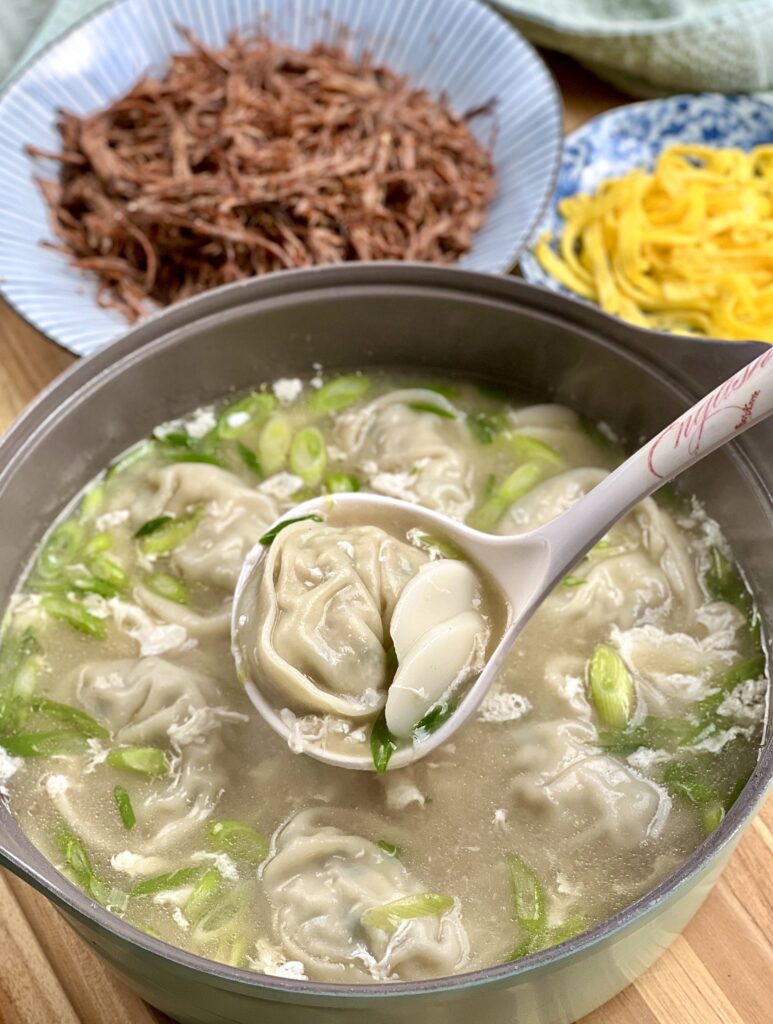
Ingredients
- Brisket- brisket is a flavorful cut of beef that makes a wonderful broth. After boiling, we will be shredding the brisket and seasoning it with gochugaru, sesame oil, sea salt, black pepper, and sesame seeds.
- Dashida- this ingredient is optional but highly recommended. Dashida is Korean beef bouillon and has a bit of msg in it. It will take the beef broth to the next level!
- Aromatics- To make a flavorful broth, you will need some onion, garlic, and the white parts of green onions.
- Seasoning- I season my broth with fish sauce, soup soy sauce (jin ganjang), sesame oil, and sea salt & black pepper to taste. You can use regular soy sauce if you don’t have soup soy sauce.
- Mandu- I’m using frozen kimchi dumplings but you can use whatever dumplings you like. If using freshly made dumplings, adjust the cooking time accordingly.
- Sliced rice cakes- this is the star of the dish. I don’t recommend skipping it, as it adds a bit of thickness to the soup and is so chewy and delicious! If you’re using frozen rice cakes, make sure you soak them in water for 5-10 minutes before cooking.
- Eggs- this is also optional. Separate the egg whites from the yolk to make the jidan garnish. I only make jidan out of the yolk- the egg whites I pour directly into the broth at the end for somewhat of an egg drop soup consistency.
- Roasted Seaweed- cut the roasted seaweed into thin strips to add as a garnish. I prefer to use the seasoned roasted seaweed packets.
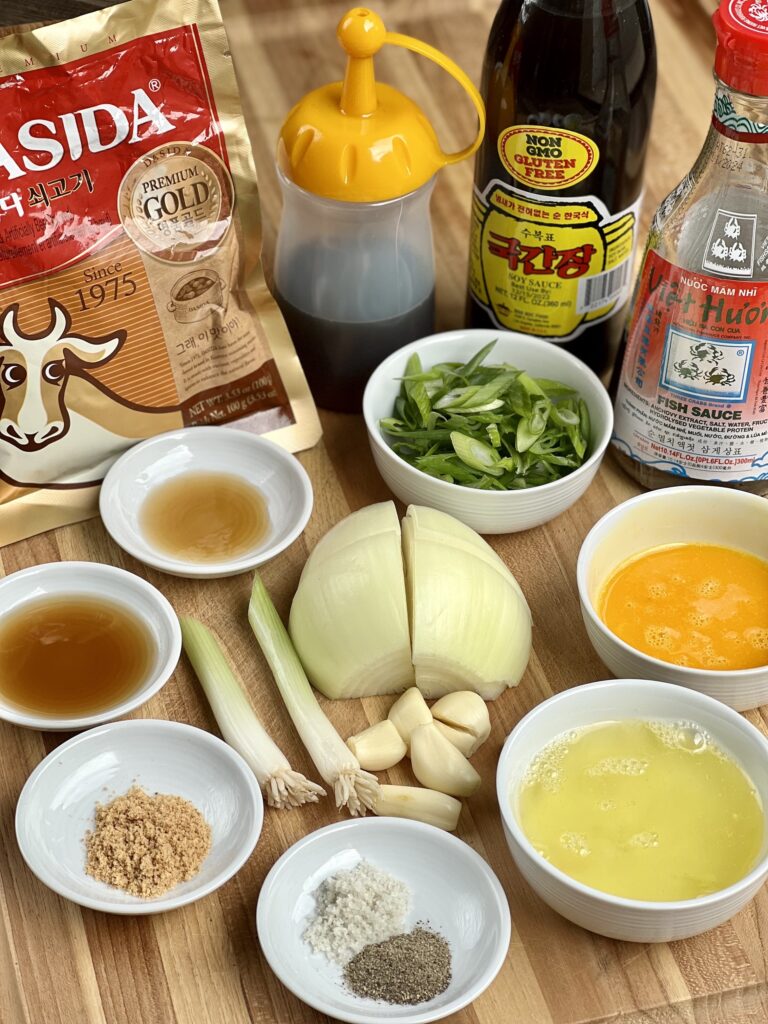
Where to buy all the ingredients
This recipe calls for a few ingredients that most non-Koreans will not have in their kitchen. All of them can be found at a Korean supermarket for sure, and maybe at any other Asian supermarket. If you’re having a hard time finding them, here are some options to either buy online (affiliate links) or substitute for something else:
- Dashida- unfortunately this ingredient is not available on Amazon, but a good substitute is Knorr beef bouillon. You should be able to find this at any supermarket, or you can buy it on Amazon here.
- Fish sauce- I always use the Three Crabs brand fish sauce. It is sold at all Asian supermarkets and some American grocery stores. If you can’t find it, Amazon sells it but it is double the price! The price on fish sauce is inflated enough as it is (because of the pandemic), so I would avoid ordering online if possible. If Amazon is your only option, here is the link to purchase.
- Soup soy sauce- soup soy sauce is lighter in color and has more umami (saltier). You can use regular soy sauce if you want to, but you will need to use a little more and your soup might turn out a bit darker, which is okay. If you are unable to find soup soy sauce, you can purchase this one online.
- Sliced rice cakes- the brand I use is pictured below (Hansang), and the only guaranteed place you can find it is a Korean supermarket. I love these because they are extra chewy (kneaded twice). Any brand is fine, but I highly recommend staying away from the frozen ones. Try to find the refrigerated, vacuum sealed bags like the one below. Alternatively, you can use fresh rice cakes and slice them into ovals yourself. If neither of these options are available to you, you can purchase this brand on Amazon.
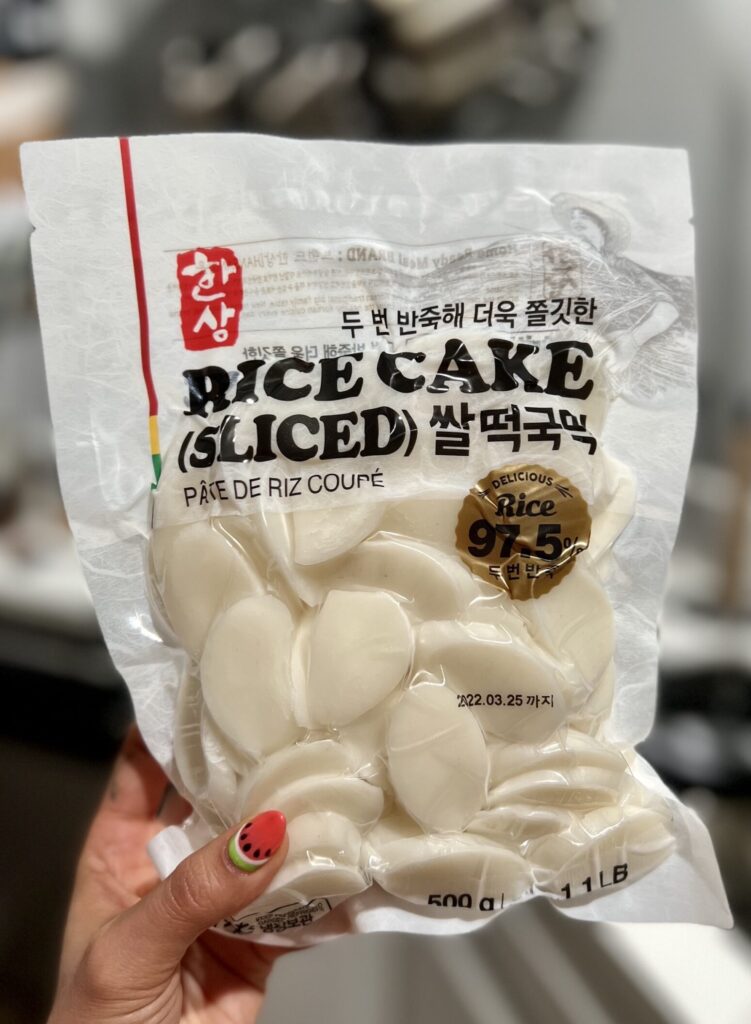
Mandu
You don’t have to use kimchi mandu or any mandu at all for this recipe! Sometimes I make it without, or with a different kind of mandu. I don’t have my kimchi mandu recipe posted yet, but if you want to make your own mandu for this, you can try my shrimp & pork mandu recipe.
Frozen vs. Fresh
If there is a brand that makes a mandu that you really like, go for it! When I make tteok mandu guk, I usually use frozen dumplings anyway. Sometimes store bought, and sometimes homemade. Just make sure you adjust the cooking time accordingly if you are using fresh mandu. Either way, the mandu will float once they are ready.
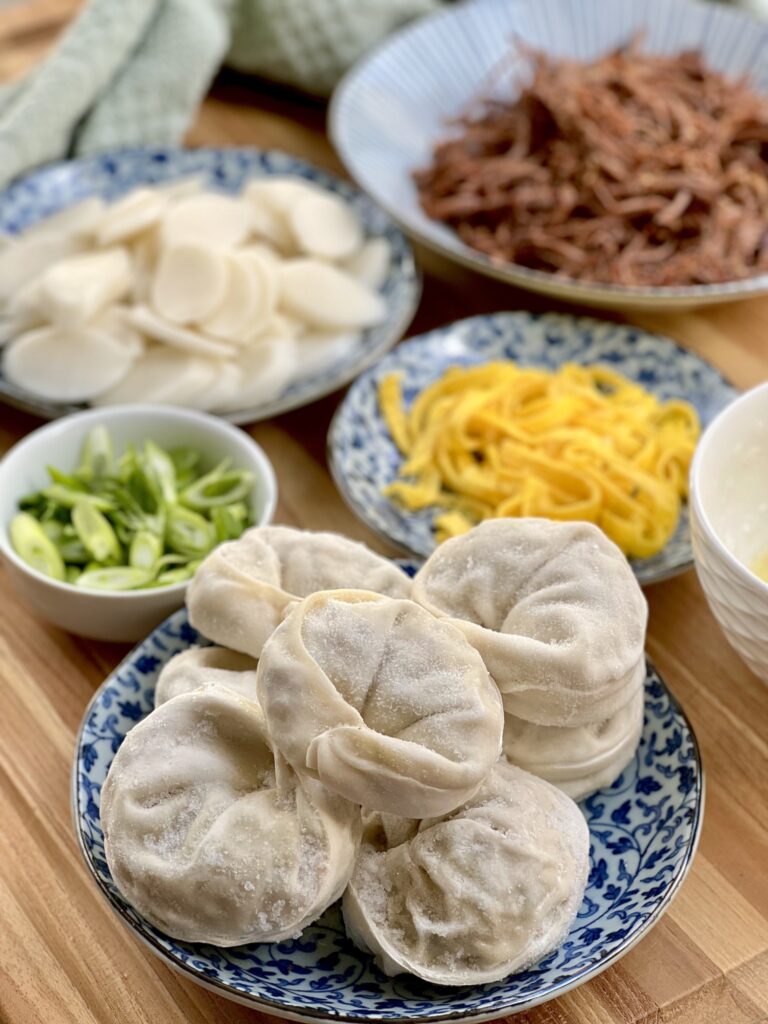
Optional Garnish/Toppings
The jidan (egg garnish) is a bit extra and not really necessary if you want to save some time. This is more like the traditional Seoul style, but I add it in my tteokguk because it’s pretty and blends the various styles of Korean tteokguk.
The roasted seaweed is also totally optional. Most recipe actually use the unseasoned sheets of laver, but I prefer the seasoned packets of seaweed.
I think it’s important that each component to any dish is well seasoned and makes a difference, but the seasonings for the shredded brisket are also optional. It doesn’t take much work to whip up, but you can skip it to save time and effort if you want to.
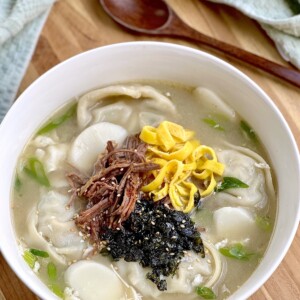
Rice Cake Soup with Dumplings (Tteok Mandu Guk)
Ingredients
Beef Broth
- 14 oz brisket
- 1 tsp dashida
- 1/2 medium onion
- 2 green onions (white part only)
- 5 garlic cloves
- 8 cups water
Broth Seasoning
- 1 tsp fish sauce
- 1 tsp soup soy sauce
- 1 tsp sesame oil
- sea salt to taste
- black pepper to taste
Beef Seasoning
- 1 tsp sesame oil, or more to taste
- 1 tsp sesame seeds
- 2 tsp gochugaru
- 1/2 tsp sea salt
- 1/4 tsp black pepper
Garnish/Other ingredients
- 10 oz sliced rice cakes
- 6-8 dumplings of your choice
- 2 green onions
- 2 eggs, yolk & whites separated
- 1 pack roasted seaweed, cut into strips
Instructions
- Soak the brisket in cold water for 1 hour to draw out the blood. Discard the bloody water.
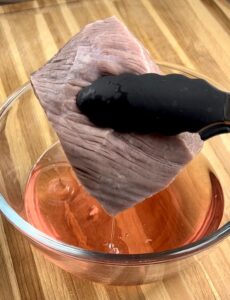
- In a pot, add the brisket, cold water, onion, garlic, dashida, and white parts of green onion. The dashida will clump up- it's ok, just mix it.
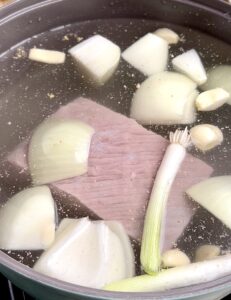
- Bring to a boil uncovered, then cover and simmer on medium low heat for 1 to 1 1/2 hours. Skim off any impurities that float to the surface.
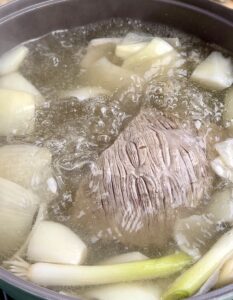
- Meanwhile, make the jidan (egg garnish). Separate the egg whites from the yolk. Season the egg yolk with a pinch of salt and lightly whip it.
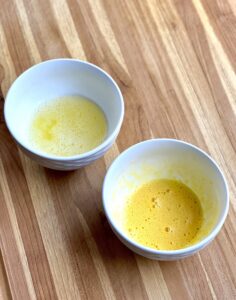
- On a non stick pan without oil (or very lightly oiled), spread the yolk evenly and thinly over low heat. Then turn off the heat and flip it over once it has set. It should not be browned or have many air bubbles.
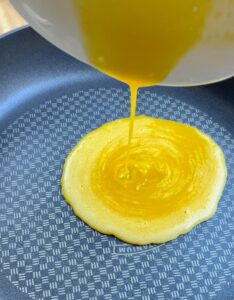
- Roll up the jidan and cut into thin slices. Set aside.
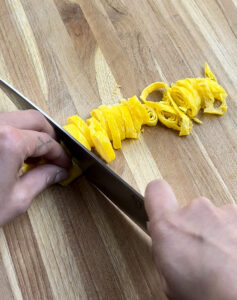
- When the broth is done, turn off the heat and remove the brisket. Set it aside to cool and shred.
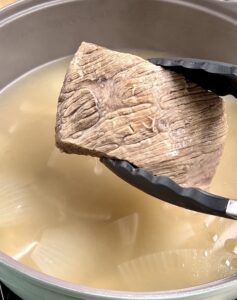
- Strain the broth and discard the aromatics.

- Add all the beef seasoning ingredients and mix well. Set aside.
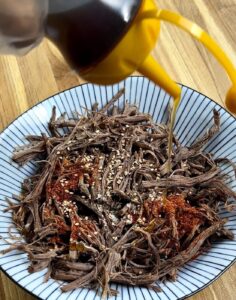
- Season the broth with fish sauce and soup soy sauce.
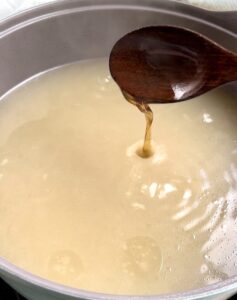
- Add sea salt and black pepper to taste. Careful not to add too much sea salt- the beef is also seasoned with sea salt so keep that in mind.
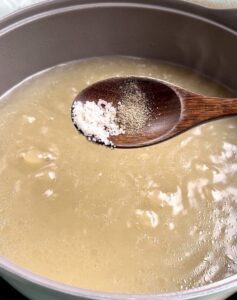
- Add the dumplings- I'm using frozen dumplings which take 7-8 minutes to cook, so I'm adding them before the rice cakes which will only take 3-4 minutes.
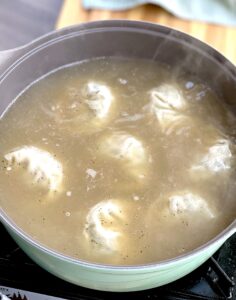
- Rinse the rice cakes then add them to the soup. Cook for 3 minutes. The mandu and rice cakes will float once they are ready. If you are using frozen rice cakes, you will need to soak them in water for 5-10 minutes before adding to the soup.
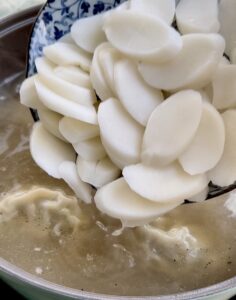
- Add 1 tsp sesame oil, chopped green onions, and egg whites. Stir then turn off the heat.
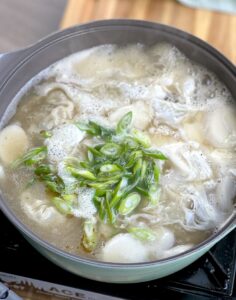
- Serve immediately and top with the seasoned brisket, jidan (egg yolk strips), and roasted seaweed strips. Note: do not wait too long to serve. The rice cakes will absorb too much broth and get very soggy.
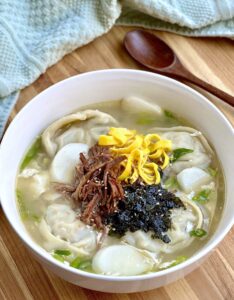
Nutrition information is automatically calculated, so should only be used as an approximation.
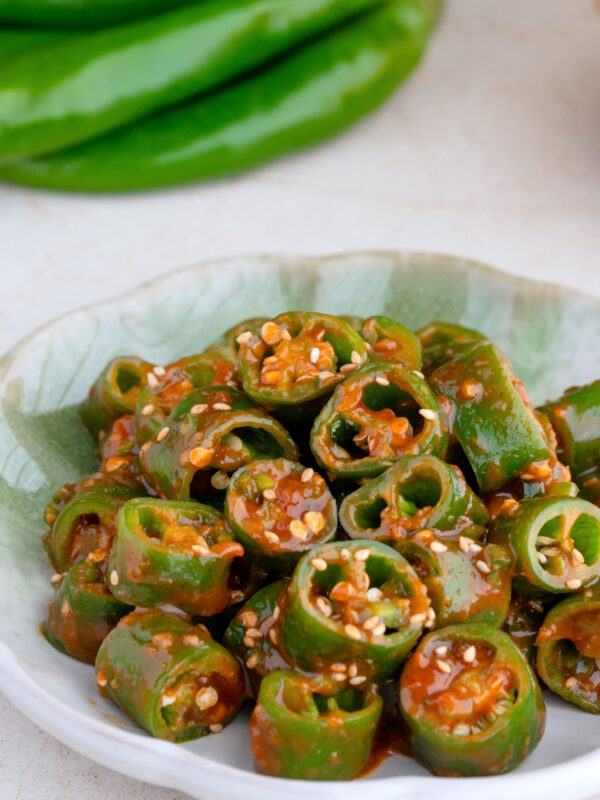
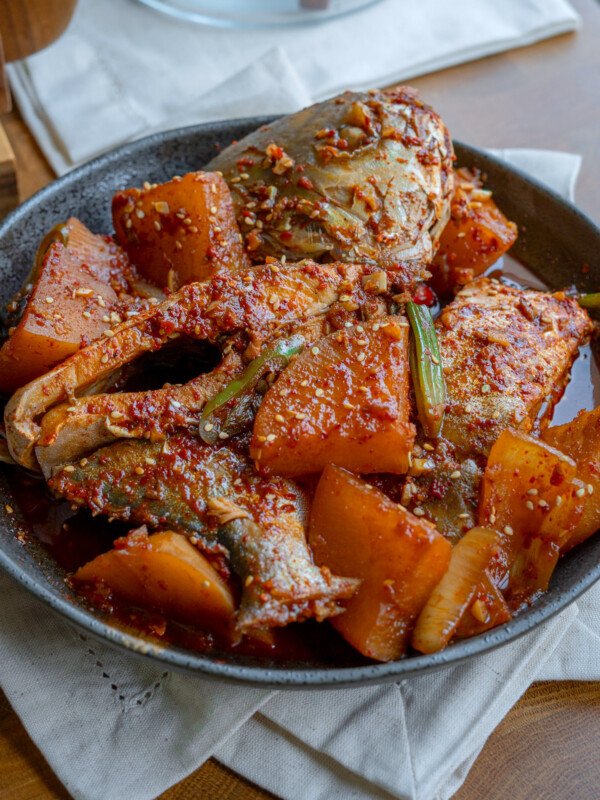
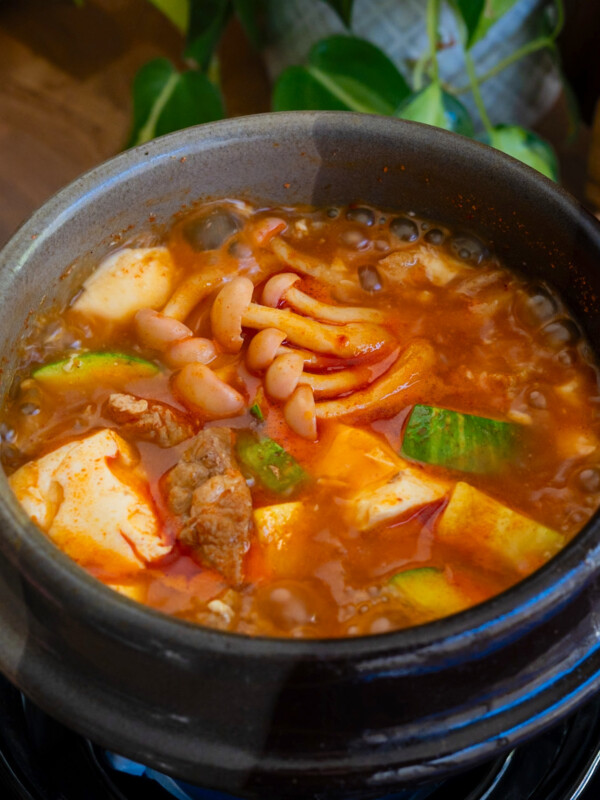
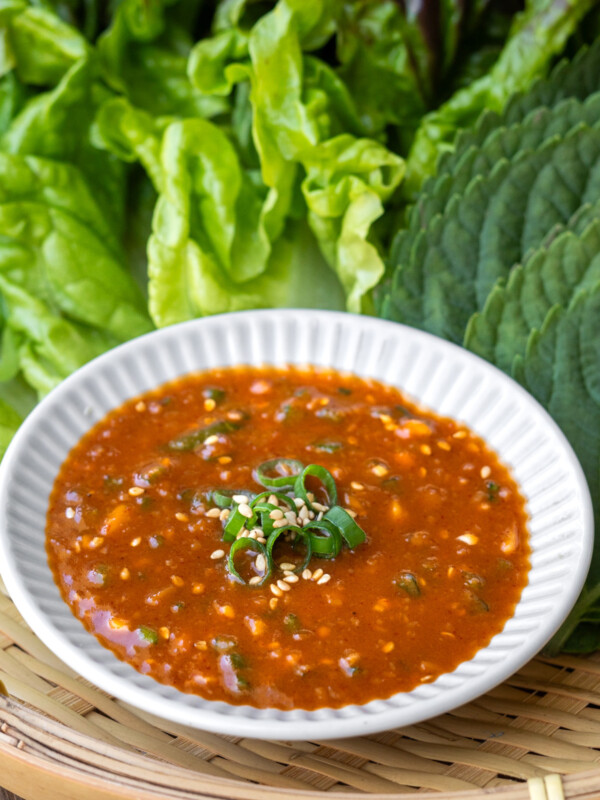







Honestly everything I make from Stella’s recipes are all sooo good. I love how she explains things. This was very fun to make and sooo 😊 yummy!
Loved making this for Korean New Year for my parents! Delish and easy to follow, will definitely keep this in the rotation
Love your recipes, especially this one. You inspired me to incorporate this dish into our family new years tradition!
I made this soup this new year. It’s one of my favorites anytime of the year really. It turned out fantastic! And it scored me major points with the in-laws! 🙂
I followed your recipe and made this for my parents for LNY and they absolutely loved it!
Very neat,
Liked the simplicity